Drip edges play a crucial role in protecting buildings from water damage by directing rainwater away from the structure’s foundation. To achieve precise and consistent drip edges, the use of a drip edge roll forming machine has become increasingly popular in the construction industry. In this article, we will explore the various aspects of drip edge roll forming machines, their benefits, working principles, types, installation and maintenance, as well as safety precautions. Let’s dive in!
1 परिचय
The significance of drip edges in safeguarding buildings cannot be overstated. These small, yet essential, components act as barriers against water infiltration, preventing potential structural damage and costly repairs. To streamline the manufacturing process and ensure accuracy, the drip edge roll forming machine has become an indispensable tool for construction companies and roofing professionals.
2. What is a Drip Edge Roll Forming Machine?
A drip edge roll forming machine is a specialized piece of equipment designed to produce drip edges in a continuous and automated manner. It utilizes a roll forming process, where a flat metal coil is fed into the machine, and through a series of rollers and dies, the metal is gradually formed into the desired shape of the drip edge. The machine can handle various materials, such as galvanized steel, aluminum, or copper, allowing flexibility in choosing the most suitable material for the specific application.
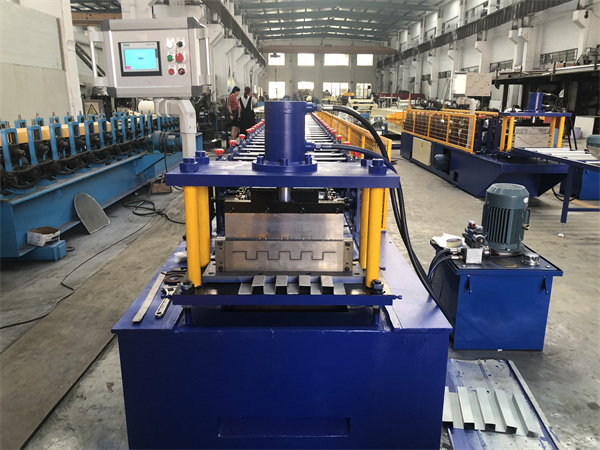
3. Benefits of Using a Drip Edge Roll Forming Machine
Using a drip edge roll forming machine offers numerous advantages over traditional manual fabrication methods. Let’s explore some of the key benefits:
- Increased Efficiency: The machine automates the process, significantly increasing production speed and reducing labor costs. It eliminates the need for manual cutting, bending, and shaping, enabling the production of large quantities of drip edges in a short period.
- Consistency and Accuracy: The machine ensures consistent dimensions and shapes for each drip edge, minimizing variations and ensuring a precise fit during installation. This consistency enhances the overall quality and aesthetics of the building.
- Customization Options: Drip edge roll forming machines offer the flexibility to customize the dimensions, profiles, and designs of the drip edges according to specific project requirements. This allows for greater versatility and compatibility with different roofing systems.
- Cost Savings: By reducing manual labor and increasing production efficiency, drip edge roll forming machines contribute to cost savings for construction companies. The machine’s high productivity and low maintenance requirements make it a cost-effective long-term investment.
- Durability and Longevity: Drip edges produced by roll forming machines are made from high-quality materials and undergo a precise manufacturing process. This ensures the drip edges have excellent strength, durability, and resistance to environmental elements, extending their lifespan and performance.
- Waste Reduction: With accurate measurements and precise forming, drip edge roll forming machines minimize material waste compared to manual fabrication methods. This reduces material costs and promotes sustainability by minimizing the environmental impact.
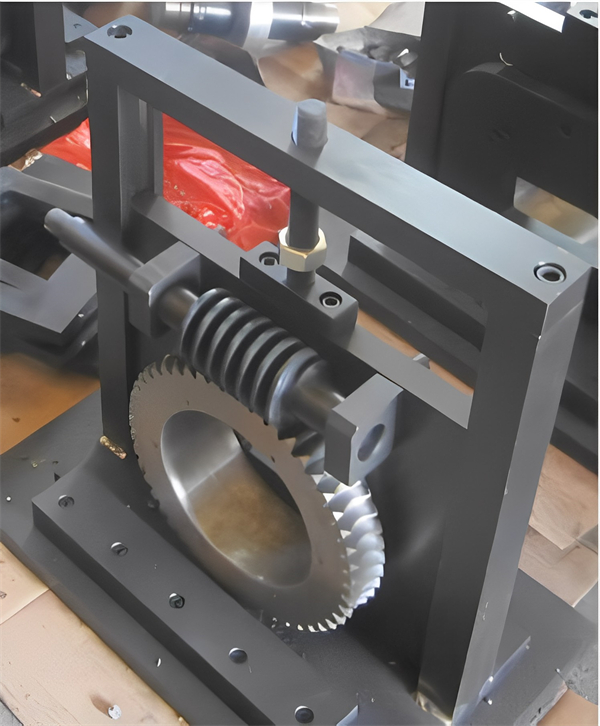
4. How Does a Drip Edge Roll Forming Machine Work?
A drip edge roll forming machine operates through a series of steps that transform a flat metal coil into a fully formed drip edge. Here is an overview of the process:
- Material Feeding: The flat metal coil, typically made of galvanized steel, aluminum, or copper, is loaded onto the machine. The coil is unrolled and fed into the roll forming machine.
- Roll Forming: The metal coil passes through a series of rollers and dies, which progressively shape the metal into the desired profile of the drip edge. The rollers apply pressure and gradually bend the metal along its length.
- Cutting and Shearing: Once the metal has been formed, the machine incorporates a cutting mechanism to precisely cut the drip edges to the desired length. Some machines feature automatic cutting systems that ensure accuracy and efficiency.
- Finishing and Stacking: After the cutting process, the finished drip edges are conveyed to a stacking system, where they are neatly collected and organized for packaging or further processing.
The entire process is controlled by an integrated control system, which allows operators to adjust settings, monitor production parameters, and ensure consistent quality output.

5. Different Types of Drip Edge Roll Forming Machines
Drip edge roll forming machines come in various configurations to accommodate different production needs and material specifications. Here are a few common types:
- Single-Profile Roll Forming Machine: This type of machine is designed to produce a single profile or design of drip edge. It is ideal for projects that require a specific drip edge shape and do not require frequent design changes.
- Multi-Profile Roll Forming Machine: As the name suggests, this machine can produce multiple profiles or designs of drip edges. It offers versatility and flexibility, allowing manufacturers to cater to a broader range of project requirements.
- Portable Roll Forming Machine: Portable roll forming machines are compact and lightweight, designed for on-site or mobile use. They enable contractors to produce drip edges directly at the construction site, eliminating the need for transportation and reducing lead times.
- Fully Automated Roll Forming Line: This advanced roll forming system incorporates automated material handling, precise forming processes, cutting mechanisms, and stacking systems. It offers high productivity, efficiency, and quality control, making it suitable for large-scale manufacturing operations.
The choice of drip edge roll forming machine depends on factors such as production volume, required customization, and budgetary considerations.
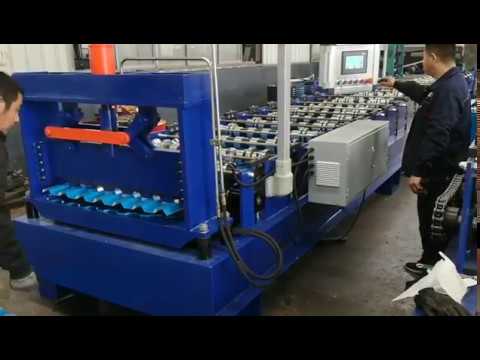
6. Factors to Consider When Choosing a Drip Edge Roll Forming Machine
Selecting the right drip edge roll forming machine is crucial for achieving optimal production efficiency and quality. Consider the following factors when making a decision:
- Production Capacity: Evaluate the machine’s production capacity in terms of output per hour or per shift. Match this capacity with your production requirements to ensure smooth and timely manufacturing.
- Material Compatibility: Consider the types of materials the machine can handle, such as galvanized steel, aluminum, or copper. Ensure that the machine is compatible with the materials you intend to use for drip edge production.
- Flexibility and Customization: Determine whether the machine allows for easy customization of drip edge profiles and dimensions. Look for adjustable settings and tooling options that can accommodate different design requirements.
- Ease of Use and Maintenance: A user-friendly machine with intuitive controls and easy setup reduces training time and increases operator efficiency. Additionally, consider the maintenance requirements of the machine to ensure smooth and trouble-free operation.
- Quality and Accuracy: Look for a machine that produces consistent and precise drip edges. Check for features such as precision cutting mechanisms, adjustable forming rollers, and reliable control systems that ensure high-quality output.
- Space and Installation Requirements: Consider the physical dimensions of the machine and ensure it can fit within your production facility. Additionally, assess any installation requirements, such as power supply, ventilation, or additional support structures.
- Supplier Support and Warranty: Research the reputation and reliability of the machine manufacturer or supplier. Evaluate the level of technical support, training, and after-sales service they provide. A comprehensive warranty ensures peace of mind and protection against unexpected issues.
By carefully considering these factors, you can choose a drip edge roll forming machine that best suits your specific manufacturing needs.
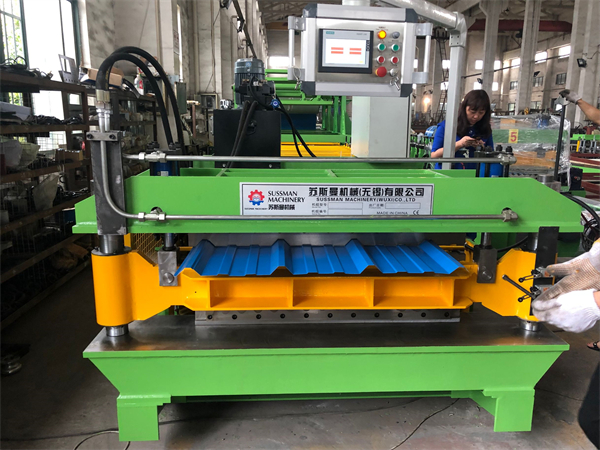
7. Installation and Maintenance of a Drip Edge Roll Forming Machine
Proper installation and regular maintenance are crucial for the efficient and long-lasting operation of a drip edge roll forming machine. Follow these guidelines to ensure optimal performance:
Installation:
- Prepare the Workspace: Clear the installation area and ensure there is sufficient space for the machine, material storage, and operator movement. Ensure the floor is level and can support the machine’s weight.
- Power and Utilities: Connect the machine to a stable power supply that meets the specified requirements. Ensure proper grounding and protection against power surges. If the machine requires other utilities such as compressed air or cooling water, ensure their availability and proper connections.
- Secure the Machine: Use appropriate anchoring methods to secure the machine to the floor or foundation. This prevents vibration and ensures stability during operation.
- Calibration and Alignment: Perform initial calibration and alignment procedures as per the manufacturer’s instructions. This ensures proper functioning and accurate drip edge production.
Maintenance:
- Regular Cleaning: Keep the machine clean from debris, dust, and metal shavings. Regularly remove accumulated dirt to prevent it from affecting the machine’s performance and longevity.
- Lubrication: Follow the recommended lubrication schedule provided by the manufacturer. Apply lubricants to the specified points to minimize friction and wear, ensuring smooth operation of moving parts.
- Inspections and Repairs: Conduct routine inspections to identify any signs of wear, damage, or misalignment. Promptly address any issues to prevent further damage and maintain optimal performance. Seek professional assistance for complex repairs.
- Operator Training: Train operators on proper machine operation, safety procedures, and routine maintenance tasks. This ensures that the machine is handled correctly and that minor issues can be addressed promptly.
By adhering to installation guidelines and implementing a regular maintenance schedule, you can maximize the lifespan and efficiency of your drip edge roll forming machine.
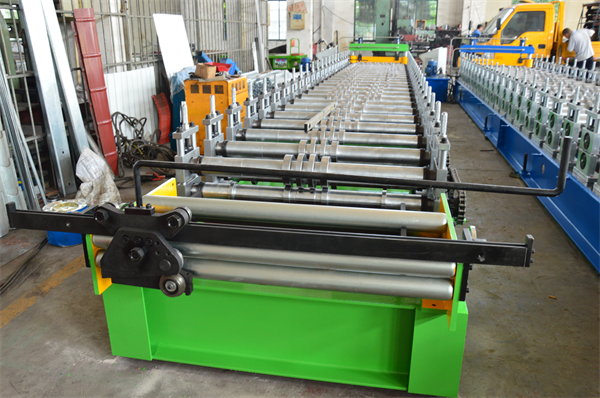
8. Tips for Maximizing Efficiency and Productivity
To optimize the performance of your drip edge roll forming machine and improve productivity, consider the following tips:
- Pre-Production Planning: Properly plan your production schedule, taking into account material availability, design requirements, and machine setup time. A well-organized workflow minimizes downtime and maximizes efficiency.
- Material Handling and Feeding: Ensure that the material coils are stored in a clean and organized manner to prevent damage or contamination. Use appropriate feeding mechanisms to ensure smooth and consistent material flow into the machine.
- Optimize Tooling and Settings: Fine-tune the machine’s settings and tooling to achieve the desired drip edge dimensions and profiles. Regularly inspect and adjust the rollers, dies, and cutting mechanisms to maintain accuracy and quality.
- Batch Processing: Consider grouping similar drip edge orders together to minimize setup and changeover time. This allows for more efficient production runs and reduces the time spent on adjusting the machine for different designs.
- Quality Control Checks: Implement quality control measures throughout the production process. Regularly inspect the formed drip edges for dimensional accuracy, surface finish, and overall quality. This ensures that only high-quality products are delivered to customers.
- Operator Training and Skill Development: Invest in training programs to enhance operator skills and knowledge of the machine’s operation. Well-trained operators can identify and resolve issues quickly, leading to improved efficiency and reduced downtime.
- Continuous Improvement: Encourage feedback from operators and regularly evaluate the machine’s performance. Look for opportunities to optimize processes, reduce waste, and improve overall productivity. Implement continuous improvement initiatives to stay ahead in a competitive market.
By implementing these tips, you can maximize the efficiency and productivity of your drip edge roll forming machine, resulting in streamlined operations and satisfied customers.

9. Common Issues and Troubleshooting
Despite their efficiency, drip edge roll forming machines may encounter occasional issues. Here are some common problems and troubleshooting steps:
- Material Jamming: If the material coil gets stuck or jams during feeding, stop the machine immediately. Clear any obstructions and inspect the feeding mechanism for misalignment or damage. Resume operation only when the issue is resolved.
- Inconsistent Drip Edge Dimensions: If the produced drip edges vary in size or shape, check the alignment of the rollers and dies. Make sure they are properly adjusted and tightened. Also, inspect the cutting mechanism for any dull blades or misalignment.
- Uneven Surface Finish: If the drip edges have an inconsistent or rough surface finish, examine the condition of the forming rollers. Clean or replace any worn-out or damaged rollers. Lubricate the rollers regularly to ensure smooth material flow.
- Machine Vibrations or Noises: Excessive vibrations or unusual noises may indicate misalignment or loose components. Inspect the machine’s frame, supports, and fasteners. Tighten any loose parts or consult a professional for assistance.
- Electrical or Control System Malfunction: If the machine experiences electrical issues or control system failures, immediately disconnect the power supply and consult a qualified technician. Do not attempt to repair electrical components unless you have the necessary expertise.
It is essential to follow the manufacturer’s troubleshooting guide and seek professional assistance when needed. Regular maintenance and prompt problem-solving contribute to the smooth operation of your drip edge roll forming machine.
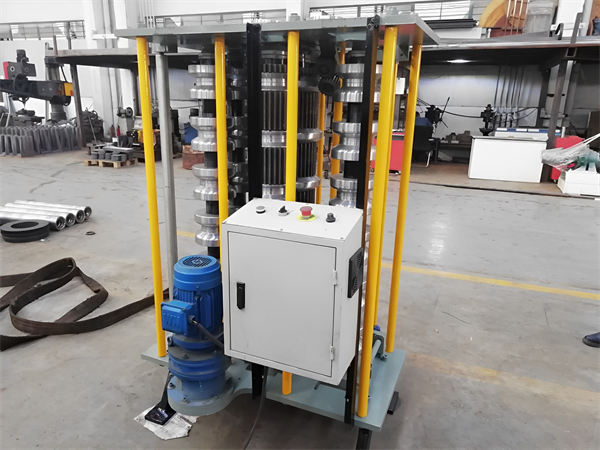
10. Safety Precautions for Operating a Drip Edge Roll Forming Machine
Operating a drip edge roll forming machine involves potential hazards, and it is crucial to prioritize safety. Here are some essential safety precautions to follow:
- Operator Training: Ensure that operators receive comprehensive training on machine operation, safety protocols, and emergency procedures. Familiarize them with the machine’s control systems and safety features.
- Protective Equipment: Operators should wear appropriate personal protective equipment (PPE), including safety glasses, gloves, hearing protection, and steel-toed shoes. PPE helps prevent injuries from flying debris, noise, and slip or trip hazards.
- Machine Guarding: Install proper machine guards to protect operators from moving parts, pinch points, and cutting mechanisms. Guards should be securely in place and inspected regularly for any damage or defects.
- Lock out/Tagout Procedures: Implement lockout/tagout procedures to ensure that the machine is completely shut down and de-energized during maintenance or repair tasks. This prevents accidental startup and protects operators from electrical hazards.
- Safe Material Handling: Use appropriate lifting equipment and techniques when handling heavy material coils. Ensure that the material is securely positioned and that operators maintain a safe distance from moving parts.
- Fire Safety Measures: Maintain a clean and organized workspace to minimize the risk of fire. Keep flammable materials away from the machine and have fire extinguishers readily available. Regularly inspect electrical connections for any signs of overheating or damage.
- Emergency Stop Buttons: Clearly mark and identify emergency stop buttons on the machine. Operators should know the location of these buttons and how to use them in case of an emergency or equipment malfunction.
- Regular Inspections: Conduct routine inspections of the machine to identify any potential safety hazards or signs of wear. Inspect electrical wiring, hydraulic systems, and pneumatic components for damage or leaks. Address any issues promptly to maintain a safe working environment.
- Housekeeping: Maintain a clean and organized workspace, free from clutter, debris, or obstructions. Regularly clean the machine to remove metal shavings, dust, and other potential hazards.
- Safety Signage: Install clear and visible safety signs, warnings, and instructions near the machine. This includes information on emergency procedures, machine-specific hazards, and contact details for reporting safety concerns.
By adhering to these safety precautions, you can create a secure working environment and protect operators from potential accidents or injuries associated with operating a drip edge roll forming machine.
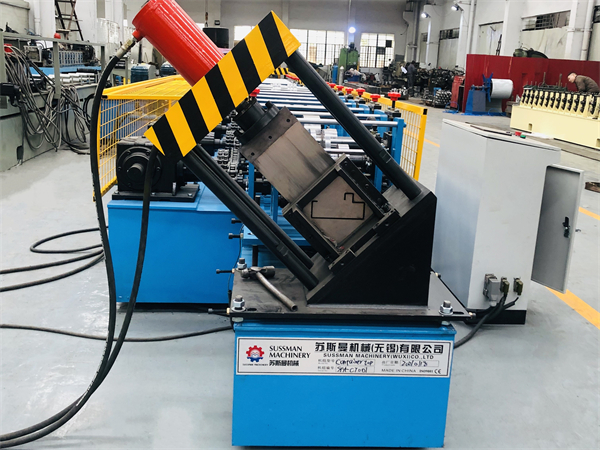
11. Cost and Return on Investment
Investing in a drip edge roll forming machine involves initial costs, but it offers long-term benefits and a favorable return on investment. Consider the following factors when evaluating the cost and ROI:
- Machine Cost: Determine the initial purchase cost of the machine, including installation and setup expenses. Compare prices from different manufacturers and suppliers, ensuring that you choose a reliable and reputable brand.
- Operational Costs: Consider ongoing operational expenses such as electricity consumption, maintenance, lubricants, and replacement parts. Factor in these costs when assessing the overall investment.
- Labor Savings: Calculate the labor savings achieved by using a drip edge roll forming machine compared to manual fabrication methods. Consider the reduced workforce requirements and the associated cost savings over time.
- Increased Productivity: Assess the machine’s production capacity and speed compared to manual fabrication. Estimate the increase in productivity and how it translates into higher output and potential revenue growth.
- Quality and Customer Satisfaction: Consider the impact of using a machine on the quality and consistency of the produced drip edges. Higher quality products lead to improved customer satisfaction, repeat business, and positive word-of-mouth referrals.
- Reduction in Material Waste: Quantify the reduction in material waste achieved through the machine’s precise forming process. Calculate the cost savings associated with reduced material usage.
- Market Demand: Evaluate the demand for drip edges in your target market. Consider how the machine’s increased production capacity can help meet market demand, generate new business opportunities, and increase market share.
By carefully analyzing these factors, you can assess the overall cost and return on investment of a drip edge roll forming machine. While the initial investment may be significant, the long-term benefits in terms of efficiency, productivity, and customer satisfaction make it a worthwhile investment for many businesses.
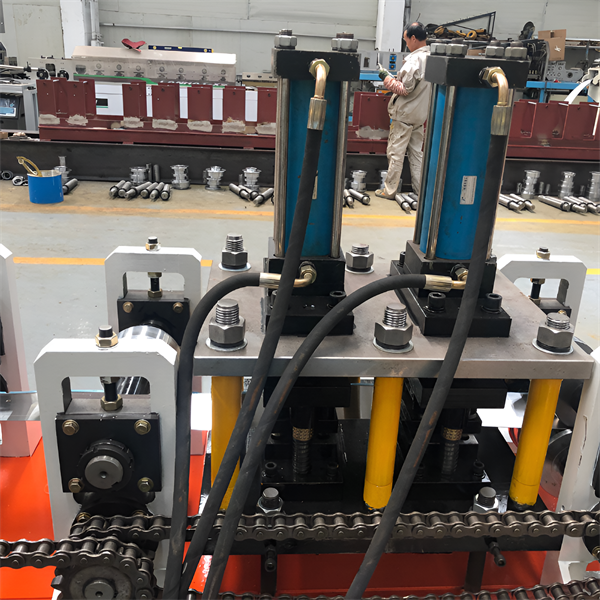
12. Advancements in Drip Edge Roll Forming Technology
The field of drip edge roll forming machines continues to evolve, with advancements in technology enhancing their performance, capabilities, and ease of use. Here are some notable advancements:
- Computer Numerical Control (CNC): Many modern drip edge roll forming machines now incorporate CNC technology. This allows for precise and automated control of the machine’s movements, resulting in improved accuracy, repeatability, and efficiency. CNC systems also offer advanced programming capabilities and real-time monitoring, enabling operators to optimize production processes and minimize errors.
- Smart Control Systems: Some drip edge roll forming machines now feature smart control systems that utilize sensors and data analysis to monitor and adjust production parameters. These systems can detect variations in material thickness, identify potential issues, and make real-time adjustments to maintain quality and consistency.
- Integration with CAD/CAM Software: Integration with computer-aided design (CAD) and computer-aided manufacturing (CAM) software has become more common in drip edge roll forming machines. This allows for seamless design transfer, enabling operators to create custom drip edge profiles and streamline the production process.
- Enhanced Material Handling: Advancements in material handling systems have improved the efficiency and safety of drip edge roll forming machines. Automated coil loading and unloading systems, as well as robotic material handling, reduce manual labor and increase production throughput.
- Remote Monitoring and Control: With the rise of connectivity and Industry 4.0 technologies, some drip edge roll forming machines now offer remote monitoring and control capabilities. Operators can monitor production status, access real-time data, and make adjustments from anywhere, improving efficiency and reducing downtime.
- Energy Efficiency: Manufacturers are increasingly focusing on energy-efficient design and components in drip edge roll forming machines. This includes the use of energy-efficient motors, optimized power consumption, and smart energy management systems, resulting in cost savings and reduced environmental impact.
- Improved Safety Features: Safety features have also seen advancements in drip edge roll forming machines. Enhanced machine guarding, improved emergency stop mechanisms, and integrated safety systems contribute to a safer working environment for operators.
These advancements in drip edge roll forming technology are revolutionizing the industry by increasing productivity, accuracy, and safety while reducing waste and downtime. Manufacturers are continuously pushing the boundaries of innovation to meet the evolving needs of the construction industry.
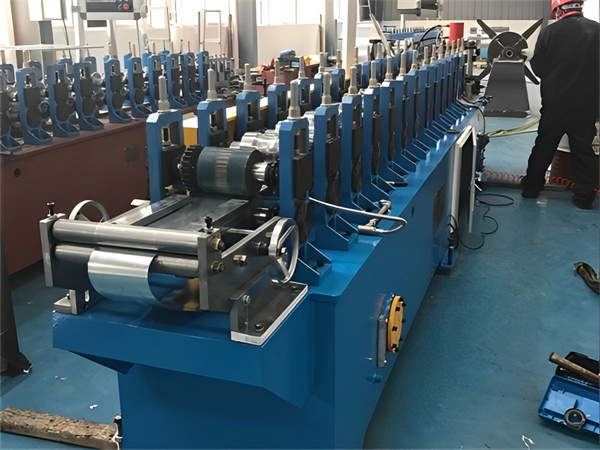
13. The Future of Drip Edge Roll Forming Machines
The future of drip edge roll forming machines holds promising developments as technology continues to advance. Here are some trends that may shape their future:
- Artificial Intelligence and Machine Learning: Integration of artificial intelligence (AI) and machine learning algorithms can further optimize the performance of drip edge roll forming machines. These technologies can analyze data, predict potential issues, and automatically adjust machine settings to maximize efficiency and quality.
- Automation and Robotics: The use of automation and robotics is likely to increase in drip edge roll forming processes. Robotic arms and systems can handle material feeding, part inspection, and even packaging, reducing the need for human intervention and enhancing overall productivity.
- Increased Customization Options: As demand for customized drip edge profiles grows, future machines may offer even greater flexibility and customization capabilities. Advanced software and tooling systems will enable manufacturers to produce highly tailored drip edges to meet specific project requirements.
- Integration with Building Information Modeling (BIM): Integration with BIM software can streamline the design and manufacturing process for drip edges. By linking the machine directly with BIM models, designers can easily transfer specifications, reducing errors and accelerating production.
- Improved Sustainability: Sustainable manufacturing practices will continue to be a driving force in the industry. Future drip edge roll forming machines may incorporate eco-friendly materials, energy-efficient components, and waste reduction measures, aligning with global sustainability goals.
- Remote and Cloud-Based Solutions: The ability to remotely access and control drip edge roll forming machines through cloud-based platforms will become more prevalent. This allows for real-time monitoring, predictive maintenance, and seamless collaboration between stakeholders regardless of their physical location.
As technology continues to advance, the future of drip edge roll forming machines holds immense potential for increased efficiency, customization, and sustainability. These advancements will not only improve the manufacturing process but also contribute to the overall quality and performance of drip edges.
By harnessing the power of AI, machine learning, and automation, manufacturers can expect higher levels of productivity and precision. Machines will become smarter, capable of self-diagnosis, predictive maintenance, and adaptive control systems. This will minimize downtime, reduce errors, and optimize production processes.
The integration of robotics and advanced material handling systems will further enhance efficiency and safety. Robots can assist with material loading, unloading, and quality inspection, freeing up human operators for more complex tasks. This integration will result in faster production cycles, improved accuracy, and reduced manual labor.
Customization will also be a key focus in the future. Drip edge roll forming machines will offer enhanced software capabilities, allowing for on-demand customization of drip edge profiles. The integration of BIM technology will streamline the design-to-manufacturing workflow, ensuring seamless communication between design teams and the production process.
Sustainability will continue to be a driving force. Future machines will incorporate eco-friendly materials, energy-efficient components, and waste reduction strategies. Manufacturers will prioritize the use of recyclable materials, optimize energy consumption, and implement green manufacturing practices.
Cloud-based solutions will enable remote access and real-time monitoring of machines from anywhere in the world. This connectivity will facilitate seamless collaboration between different stakeholders, allowing for efficient troubleshooting, data analysis, and process optimization.
In conclusion, the future of drip edge roll forming machines is set to revolutionize the construction industry. With advancements in AI, automation, customization, and sustainability, these machines will offer increased efficiency, precision, and flexibility. Embracing these technologies will enable manufacturers to stay ahead of the competition, deliver superior quality products, and meet the evolving needs of the market.
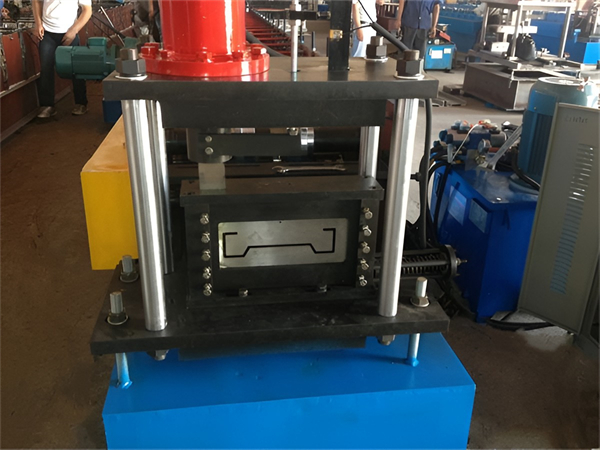
14. Conclusion
Drip edge roll forming machines have become indispensable tools in the construction industry, enabling efficient and precise production of drip edges. These machines offer numerous benefits, including increased productivity, consistency, and cost savings. By automating the roll forming process, they streamline production, reduce manual labor, and enhance the quality of drip edges.
Choosing the right drip edge roll forming machine requires careful consideration of factors such as production capacity, material compatibility, customization options, installation and maintenance requirements, and supplier support. By selecting a machine that aligns with your specific needs, you can maximize efficiency and productivity while ensuring a favorable return on investment.
It is essential to prioritize safety when operating a drip edge roll forming machine. Proper training, the use of personal protective equipment, machine guarding, and regular maintenance are crucial for creating a safe working environment.
The future of drip edge roll forming machines holds exciting possibilities with advancements in technology. Integration of AI, machine learning, automation, robotics, and sustainable practices will further enhance efficiency, customization, and productivity. Cloud-based solutions and remote access will facilitate real-time monitoring, collaboration, and optimization of machine performance.
As the construction industry continues to evolve, drip edge roll forming machines will remain at the forefront of efficient and high-quality drip edge production, contributing to the durability and protection of buildings against water damage.
पूछे जाने वाले प्रश्न
1. Are drip edge roll forming machines suitable for all types of roofing materials?
Yes, drip edge roll forming machines can handle various materials such as galvanized steel, aluminum, and copper, making them suitable for different types of roofing systems.
2. Can I produce customized drip edge profiles with a roll forming machine?
Yes, many modern drip edge roll forming machines offer customization options. By adjusting the machine’s settings and tooling, you can produce drip edges with specific dimensions and profiles to meet project requirements.
3. Are drip edge roll forming machines easy to operate?
Yes, drip edge roll forming machines are designed to be user-friendly and easy to operate. With proper training and familiarization with the machine’s controls and functions, operators can quickly become proficient in operating the machine. Additionally, advancements in technology, such as intuitive interfaces and automated control systems, further simplify the operation of these machines.
4. What are the main maintenance requirements for a drip edge roll forming machine?
Regular maintenance is essential to ensure the optimal performance and longevity of a drip edge roll forming machine. Some of the main maintenance tasks include:
- Regular cleaning to remove debris, dust, and metal shavings.
- Lubrication of moving parts to reduce friction and ensure smooth operation.
- Inspection of rollers, dies, and cutting mechanisms for wear and damage.
- Prompt repair or replacement of any faulty or worn-out components.
- Calibration and alignment checks to maintain accurate forming and cutting.
By following the manufacturer’s maintenance guidelines and implementing a regular maintenance schedule, you can keep the machine in excellent working condition and minimize the risk of unexpected breakdowns.
5. How long does it take to set up a drip edge roll forming machine for production?
The setup time for a drip edge roll forming machine can vary depending on factors such as the specific machine model, the complexity of the drip edge profile, and the operator’s familiarity with the machine. Generally, the setup process involves loading the material coil, adjusting the machine’s settings, and ensuring proper alignment of the rollers and cutting mechanisms.
With experience and efficient workflow planning, operators can minimize setup time and transition between different drip edge profiles more quickly. Advanced machines may also feature quick-change tooling systems that facilitate faster setup and changeover.
